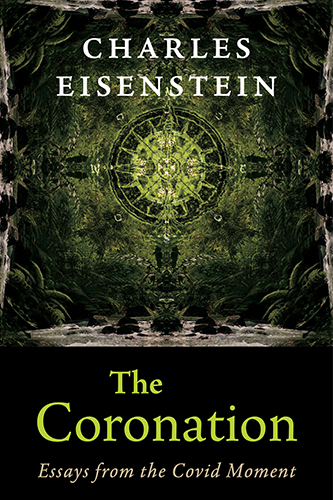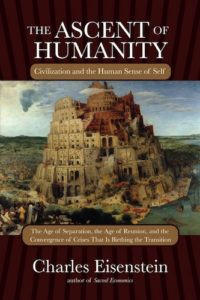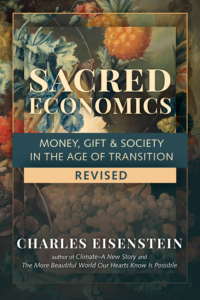Climate — A New Story
Chapters
Chapter 3: The Climate Spectrum and Beyond
Which Side Am I On?
The foregoing critique of the dominant climate change narrative may have the reader wondering which side I am on. That is always the most important question in a war. Do I, in spite of my critique of reductionism, still affirm the basic principle that carbon emissions pose a grave and immediate threat to the climate? Or am I, instead, a “climate change denier”? Which side am I on in the “fight” against climate change?
As I elaborate the critique I began in the last chapter, it will become clear that this is the wrong question: wrong in its emphasis, wrong in its implications, and wrong in the worldview that underlies it. For now I will say that this book takes a position that is both skeptical and alarmist. It is skeptical of certain aspects of the dominant narrative of climate change, while affirming that human activity is alarmingly destabilizing the ecosphere. If anything, I tend toward an extreme view of the gravity of the ecological crisis. The prescriptions herein partially align with conventional climate advocacy, and in some respects far exceed it, albeit for different reasons and from different motivation. I hope, therefore, my arguments will be persuasive even to those who disbelieve in anthropogenic global warming (AGW). For AGW believers, this book may offer new political and material strategies for addressing climate change as part of a broader ecological regeneration.
What you will see as I deconstruct the conventional spectrum of opinion on climate change is that the dynamics of the debate obscure something more important than which side is right. As with many polarizing issues, it is the hidden assumptions, shared by both sides and questioned by neither, that are most significant and most potent in taking us into new territory.
These hidden assumptions include agreements about what is significant as well as agreements on what not to talk about. To give an example from another realm, in the political debate on immigration, one side says to keep them out, the other side says let them in, and eventually governments institute a policy somewhere in the middle. But neither side asks, “What are the policies that make life in other places so unlivable that people risk their lives and separate from their families to emigrate?” Both sides agree not to talk about military imperialism, neoliberal trade policies, and the global debt regime, or are not even conscious of them. Yet without a change on that level, the immigration issue will never be resolved. The furious mainstream debate draws all the attention away from the underlying causes and toward the superficial symptoms. Therefore, it perpetuates the status quo.
Most polarized conversations are like this, whether in politics or within communities or couples. They are part of a holding pattern that absorbs and squanders the energy of discontent, leaving the real issue untouched. Usually, the real issue is more uncomfortable, because it involves not only the demonized opponent, but oneself as well.
Here is a map of the conventional spectrum of opinion on climate change, which as you will see includes positions that seem extreme and mutually opposed. They are not. However acutely opposed they may seem, hidden agreements unite them, and it is these hidden agreements that make the problem unsolvable. Where we need to go, and where the ecological crisis will eventually take us, is off this spectrum entirely.
- Climate change skepticism. This says either that climate change, especially global warming, is not happening, or that if it is happening it has little to do with human activity, or that if it is attributable to human activity it isn’t dangerous. Sometimes all three positions appear on the same skeptic website. Recently, even modest departures from climate orthodoxy draw the epithet “denialism.”
- Techno-optimism. Climate change is another of the challenges we will overcome in the triumphant onward march of technology. Through geoengineering and alternative energy technologies, we will bring down greenhouse gas levels and find other ways to cool the atmosphere. Human creativity is limitless; there is no problem we can’t solve if we put our minds to it. What is needed is simply to turn our focus to these problems, to incentivize their solutions, and thereby to unite science and finance toward the meeting of humanity’s newest challenge.
- Climate orthodoxy. The burning of fossil fuels poses a grave threat to humanity and the planet. If we do not act quickly to cut emissions and limit warming to 2°C, the future will bring rising sea levels; extreme weather, floods, and droughts; crop failures; famine and mass migrations; and devastation to marine and land ecosystems. Therefore, we need to wean ourselves off fossil fuels as quickly as possible, transition to carbon-neutral energy technologies, and encourage economic policies of sustainable development and green growth. The window for action is shrinking; there is no time to waste.
- Climate justice and systems change. This viewpoint is a step toward a deeper radicalism. It says that climate change is inextricably linked to our economic system and various institutions of social oppression. Climate change isn’t only an environmental issue, it is a social, racial, and economic issue; moreover, the system’s dependency on the profits from a fossil-fuel-based industrial economy means that climate change can be addressed only by changing capitalism as we know it.
- Climate catastrophism. This viewpoint basically says that it is already too late to prevent catastrophic climate change, except perhaps with an immediate response far beyond anything that is politically conceivable today (and perhaps not even then). The more moderate prognosticators foresee a dramatic collapse of society: a population crash, sociopolitical upheaval, and a major regress in technological levels. Those on the more extreme end predict temperature rises of 6–10°C within the next few decades, which would mean the end of civilization and possibly the extinction of the human species. Some such as Guy McPherson predict human extinction within ten years.[1]
What could possibly unite such disparate viewpoints? First, they share a focus on greenhouse gases and global temperatures. On one end of the spectrum, it is that they aren’t a problem; on the other, that they spell the end of civilization. All agree with the general consensus that puts climate change and carbon at the heart of environmentalism.
Accordingly, the skeptics (most of them anyway, but not all) throw out the baby of care for nature with the bathwater of the standard AGW narrative. Similarly, alarmists unwittingly demote other environmental issues (not to mention social issues) to secondary importance in their focus on AGW.
The intensity and ubiquity of the conversation around this issue sucks the air out of the room for issues like wildlife conservation, habitat preservation, toxic and nuclear waste, soil erosion, aquifer depletion, and so on. Tragically, as I will argue, it is precisely these other issues that are the hidden drivers of climate instability. Climate change is a symptom of ecosystem degradation, a process that goes back at least five thousand years and has reached peak intensity today. It arises from the basic relationship that has prevailed between civilization and nature.
Climate change is inviting us to forge a different kind of relationship, one that holds the planet and all of its places, ecosystems, and species sacred—not only in our conception and philosophy, but in our material relationship. Nothing less will deliver us from the environmental crisis that we face. Specifically, we need to turn our primary attention toward healing soil, water, and biodiversity, region by region and place by place. Endless photovoltaic arrays on ruined land are not going to solve the problem. We must enact a civilization-wide unifying purpose: to restore beauty, health, and life to all that has suffered during the Ascent of Humanity.
Across the spectrum, carbon dominates the conversation. Most (but again, not all) skeptics seem to want the environmental problem to go away altogether, and hope that by refuting climate change we will once again have unlimited license to pillage the planet. The climate fundamentalists, despite their general sympathy for other environmental causes, instigate a perversely similar banishment of other environmental issues that gives implicit license to any sort of ecological pillage that doesn’t generate CO2.
I am suggesting here that the frame of the debate is itself part of the problem. The “frame of the debate”—drawing from the Story of Separation—includes:
- A conception of nature as “environment” and thus separate from ourselves
- The assumption that climate is governed primarily by global geomechanical processes (solar radiation, atmospheric gases, Earth’s rotation, polar/equatorial heat differentials, etc.) and not by life processes
- A mechanistic view of nature as an incredibly complicated machine
- The primacy of a quantitative approach to knowledge
- Valuing other beings based on instrumental utilitarianism—their use-value to ourselves
- The belief that human beings are the only fully conscious, subjective agents on this planet
In overt and subtle ways, these assumptions inform climate science and policy today, from the formulation of basic research questions, to the political arguments about climate, to priorities in funding, technology, agriculture, and industry. They are shared by alarmists and skeptics alike, which is not surprising since the same assumptions also underpin civilization as we know it. The problem and the current modes of solution come from the same place. That is why a different framing is needed.
To put it in more shocking terms, it doesn’t matter if the skeptics are right or not, because the assumptions on which the debate is based are already enough to doom us to a dystopian future. I would like therefore to offer a new “frame of the debate”:
- Earth is a living organism.
- Each biome, local ecosystem, and species contributes in unique ways to the health and resiliency of the whole; they are the organs and tissues of the Gaian organism.
- All beings—plants and animals, soil, rivers, oceans, mountains, forests, etc.—deserve respect as alive, sentient subjects and not mere things.
- Any damage to the integrity of the planet or the beings on it inevitably damages human beings as well, whether or not the causal pathways for that damage are visible.
- Similarly, a healthy planet will benefit the physical and spiritual health of humanity.
- The psychic climate comprising our beliefs, relationships, and myths is intimately connected to the atmospheric climate.
- Likewise, the political climate and social climate are co-resonant with the atmospheric climate.
- The purpose of humanity is to contribute our gifts to the beauty, aliveness, and evolution of Earth.
The converging crises of our time, including the ecological crisis, are an initiation for our civilization. The belief system I just outlined awaits us on the other side of that initiation.
Can you imagine what a society would look like that embodied these beliefs in its agriculture, technology, and economics? Current “green” policies would seem paltry in comparison. Today, the policy ship of environmentalism must sail against the current of the Story of Separation. Pulling the oars furiously, the environmental movement stirs up a mighty froth, yet for all its progress through the water, the ship is carried backward by the current; the overall condition of the planet continues to worsen. Fifty years after the Clean Air Act, pollution planetwide is worse than ever. Forty years after the Clean Water Act, the ocean’s plastic outweighs its fish. Forty years after the Endangered Species Act, biodiversity on earth is in precipitous decline. And after several decades of climate accords, climate derangement continues to intensify.
Is the solution to pull even harder on the oars? If the current is unchangeable, that would be the only hope. Here is where the metaphor breaks down, because the current is not some arbitrary force of nature or human nature, as if we were genetically disposed to destroy the world. No, the current is composed of systems created by human beings: first and foremost the financial system, and also our systems of government, science, technology, education, and religion. What human beings have created, they can uncreate.
How to uncreate them is no trivial matter. We should be skeptical of save-the-world narratives; historically, such quests have done more harm than good. Inevitably, and especially when they demand urgent action, they draw from the existing ingredients at our disposal: existing institutions of political power, existing economic mechanisms, existing modes of technology, and existing ways of thinking. To organize quick action on a large scale usually involves giving more power to institutions that wield power already. We need to look beyond existing institutions, ways of thinking, technologies, and economic mechanisms, all of which are intrinsic to the problem. Uncertainty lies ahead, new social territory in which we will discover unsuspected modes and expressions of human creativity.
I can, however, offer a guiding principle. Our system moves according to a deeper current still; namely, our civilizational mythology: the stories, meanings, perceptions, and agreements that constitute what we think to be reality. The world’s healing must and will come from outside the mythology of Separation that brought us to the present impasse.
End Notes
[1] Early in 2017 I heard him predicting with confidence human extinction in two to four years.






